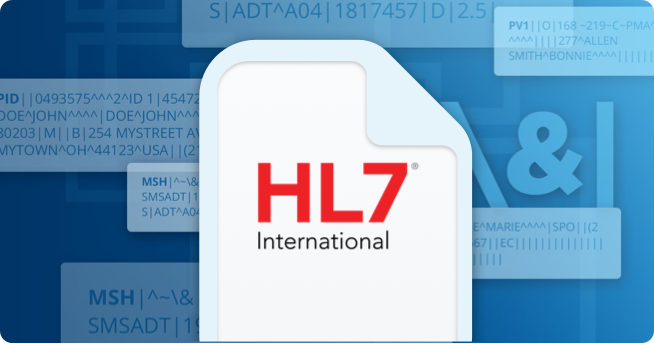The Complete Guide to HL7
HL7 Standard Versions
Health Level Seven International has authored the most broadly used data standards in the healthcare domain.
Learn more about the different versions of HL7.

Health Level Seven International has authored the most broadly used data standards in the healthcare domain.
Learn more about the different versions of HL7.

Health Level Seven (HL7®) is a healthcare-specific standards organization whose primary focus is creating a defined set of international messaging standards used to support interoperability and communication between applications and devices. These message standards can be organized into three main HL7 Standard Versions:
The HL7 v2.x standard is the most common data standard in the healthcare industry today. Learn more about HL7 Standard Versions.
Information sent using the HL7® standard is sent as a collection of one or more messages, each of which transmits one record or item of health-related information. There are many different types of HL7 messages designed to communicate essential healthcare information such as patient data, laboratory records and billing information. Each HL7 message has its own specific structure that you can learn more about here.
Here’s a short, animated video that explains in plain language what HL7® is and exactly what it does:



Explore the sections below for an in-depth overview of different HL7 versions, HL7 message types, the structure of an HL7 message, and transport methods used to send and receive HL7.
The HL7® Organisation has developed various HL7® Standards: Version 2, Version 3, and FHIR. Learn more about them here.
Although HL7® messages are human readable, they still require effort to interpret manually. Learn how HL7 messages are organized.
There are many different types of HL7® messages, each serving a unique purpose. Learn more about some of the most common types here.
HL7® messages are sent via a variety of TCP/IP transports, including LLP, FTP, SOAP, and SMTP. Learn more about the transfer protocols here.
Although HL7 and their messages are widely used, many systems don’t know how to speak the language and require a translator. HL7 integration engines work alongside existing applications as an interpreter, creating HL7 interfaces and speaking the language of HL7. Integration engines like Iguana, ensure that communicating HL7 messages is fast, reliable, secure, and cost effective.
Iguana is a data integration platform that allows you to send and receive HL7 messages with ease. With Iguana, you have the ability to filter and transform HL7 messages and even map from one HL7 version to another to support your custom workflow.
Fill out the form and we'll be in touch.